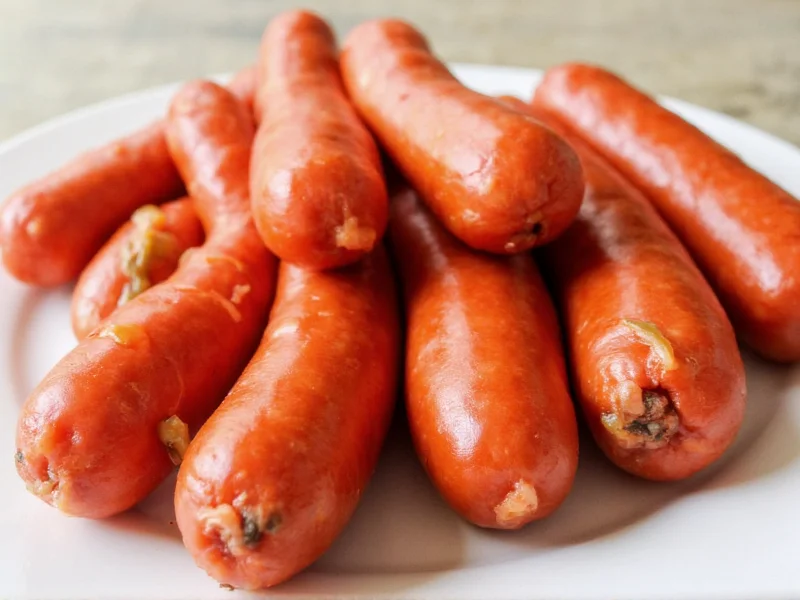Pickled sausages represent one of the most enduring food preservation techniques with global culinary significance. These tangy delicacies transform ordinary cooked sausages through a careful pickling process that enhances flavor while ensuring safety and extended shelf life. Understanding the science and tradition behind this preparation method reveals why pickled sausages remain popular across diverse cultures.
The Historical Roots of Pickled Sausage Preservation
Food preservation through pickling dates back thousands of years, with sausage preservation emerging as a practical solution for meat storage before refrigeration. Ancient civilizations discovered that acidic solutions inhibited bacterial growth, allowing communities to enjoy protein sources year-round. In Northern Europe particularly, where harsh winters limited fresh meat availability, pickled sausages became essential provisions.
Swedish pressgubbe, for example, evolved as a practical way to preserve cooked sausages for long sea voyages and winter months. German culinary traditions developed their own variations, often using regional spices and vinegars. These preservation techniques traveled with immigrants to America, where they adapted to local ingredients and tastes, creating distinctive regional styles of pickled sausages.
The Science Behind Pickling Sausages
The pickling process works through several scientific principles that ensure both safety and flavor development. When sausages are submerged in a vinegar-based brine (typically 5-7% acidity), the low pH environment creates conditions unfavorable for harmful bacteria. The brine solution usually contains:
- Vinegar (distilled white, apple cider, or wine vinegar)
- Water (to moderate acidity)
- Salt (enhances flavor and preservation)
- Sugar (balances acidity)
- Spices and aromatics (mustard seeds, peppercorns, onions, garlic)
During the pickling process, which typically lasts 1-4 weeks depending on sausage size and desired flavor intensity, several transformations occur. The acid gently denatures proteins, creating a firmer texture. Flavors from the brine penetrate the sausage through osmosis, while natural sugars in the meat caramelize slightly, developing complex flavor notes. This careful balance ensures food safety while creating distinctive taste profiles that raw or cooked sausages alone cannot achieve.
| Regional Variation | Base Sausage Type | Distinctive Brine Ingredients | Traditional Serving Method |
|---|---|---|---|
| Swedish Pressgubbe | Cubed cooked pork sausage | Vinegar, allspice, mustard seeds | With boiled potatoes and pickled beets |
| German Saure Wurst | Weisswurst or Bockwurst | White wine vinegar, bay leaves, juniper | Cold with rye bread and mustard |
| American Picnic Sausages | Smoked pork sausages | Vinegar, red pepper flakes, garlic | On sandwiches or as appetizers |
| Danish Sursild med Pølser | Small boiled sausages | Vinegar, dill, onions, cardamom | With rugbrød (rye bread) |
Creating Authentic Pickled Sausages at Home
Home preparation of pickled sausages requires attention to food safety while allowing customization of flavors. Start with high-quality cooked sausages - whether traditional bratwurst, kielbasa, or specially made pickling sausages. The basic process involves:
- Preparing a sterilized glass jar or food-safe container
- Creating a hot brine solution by heating vinegar, water, salt, sugar, and spices
- Arranging sausages in the container with additional aromatics
- Pouring hot brine over sausages, ensuring complete submersion
- Sealing and cooling to room temperature before refrigerating
For optimal results when making homemade pickled sausages, maintain proper acidity levels (pH below 4.6) to prevent botulism risk. Allow at least 72 hours for flavors to develop before tasting, though maximum flavor typically develops after 2-3 weeks. Always use non-reactive containers like glass or food-grade plastic, and never reuse pickling brine for safety reasons.
Culinary Applications and Pairing Suggestions
Pickled sausages offer versatile culinary applications beyond simple snacking. Their tangy profile cuts through rich foods, making them excellent accompaniments to fatty dishes. Traditional Scandinavian presentations feature pickled sausages alongside boiled potatoes, pickled beets, and mustard. In modern cuisine, chefs incorporate them into:
- Charcuterie boards as a distinctive element
- Salads for protein and flavor contrast
- Sandwiches with rye bread and creamy spreads
- Pickled sausage and cheese platters
- As pizza toppings for a tangy surprise
When considering what pickled sausages pair well with, balance their acidity with complementary elements. Creamy textures like potato salad or cheese counteract the tanginess, while sweet elements like caramelized onions create pleasing contrasts. For beverage pairings, traditional choices include crisp lagers, dry ciders, or light-bodied red wines that won't compete with the sausages' distinctive flavor profile.
Storage Guidelines and Shelf Life
Properly stored pickled sausages maintain quality and safety for extended periods. Commercially prepared products typically remain safe for 6-12 months unopened, while homemade versions last 2-3 months when continuously refrigerated. Key storage considerations include:
- Always keep sausages fully submerged in brine
- Maintain refrigeration below 40°F (4°C)
- Use clean utensils when handling to prevent contamination
- Discard if brine becomes cloudy or develops off odors
- Consume within 7-10 days after opening commercial products
Understanding proper storage techniques for pickled sausages ensures both safety and optimal flavor development. The preservation process continues slowly even under refrigeration, so flavors will continue evolving over time. For best results, consume homemade pickled sausages within 3 months for peak quality, though they remain safe longer if properly stored.











 浙公网安备
33010002000092号
浙公网安备
33010002000092号 浙B2-20120091-4
浙B2-20120091-4